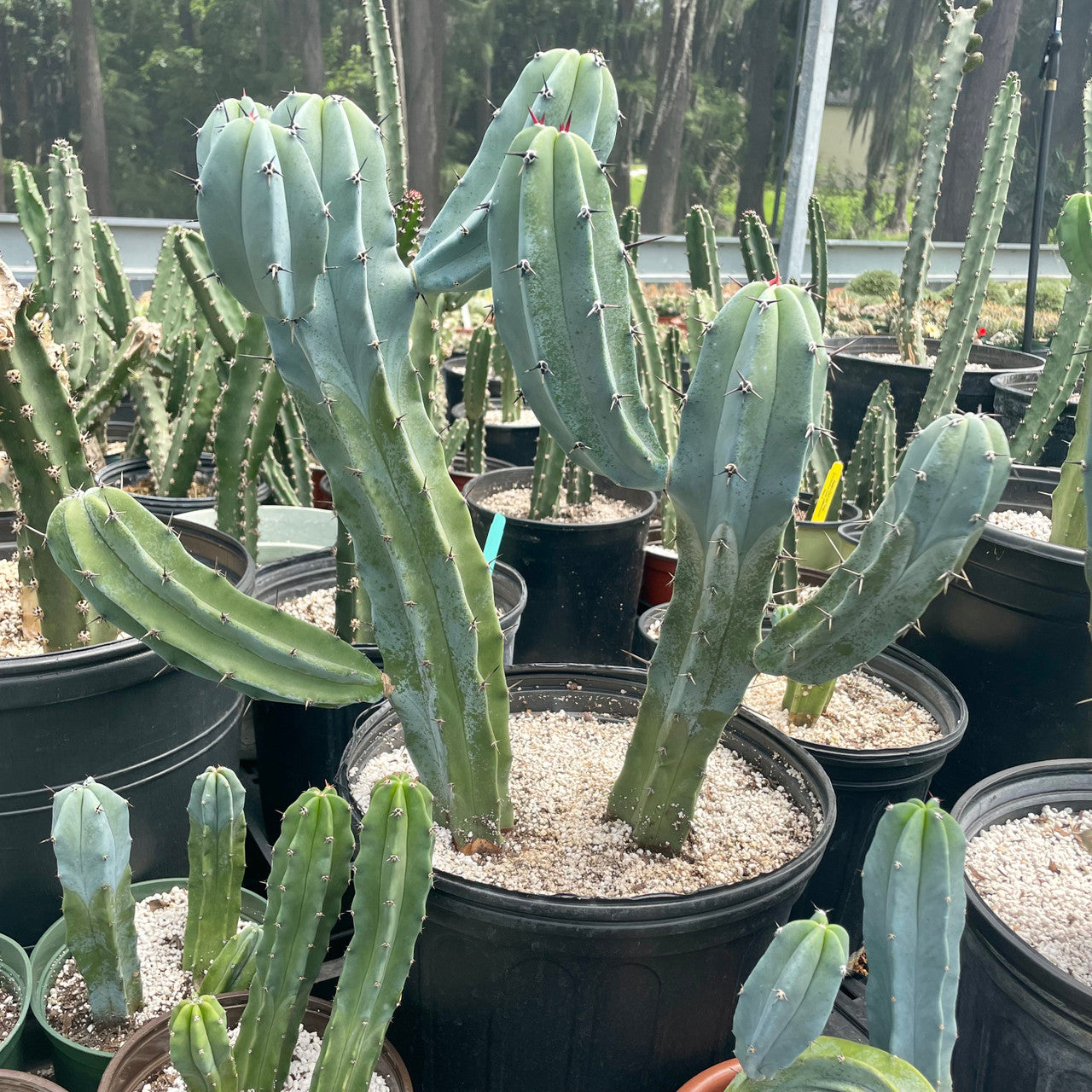Absolutely! Here’s a comprehensive 3000-word article about Myrtillocactus geometrizans, covering its botany, cultivation, and cultural significance.

Stem and Ribs
The most prominent feature of Myrtillocactus geometrizans is its columnar stem. Mature plants can reach heights of 10 to 15 feet (3 to 4.5 meters), branching from the base to form candelabra-like structures. The stems are typically 5 to 10 ribs, each rib bearing areoles spaced along the edges. These areoles are the points from which spines and flowers emerge.
The characteristic blue-green hue of the stems is due to a waxy coating that helps protect the plant from intense sunlight and reduces water loss. This glaucous appearance is a significant factor in its aesthetic appeal.
Spines
The spines of Myrtillocactus geometrizans are relatively short and sparse compared to many other cacti. They are typically needle-like, ranging from brownish to grayish, and are not particularly aggressive. The number and length of spines per areole can vary, but they generally serve to provide some protection against herbivores.
Flowers and Fruits

The flowers of Myrtillocactus geometrizans are small, greenish-white, and bell-shaped. They bloom during the warmer months, typically in spring and summer. The flowers are nocturnal, opening at night and closing during the day, which suggests pollination by nocturnal insects or bats in their native habitat.
Following pollination, the plant produces small, spherical fruits that resemble blueberries in appearance. These fruits are edible and have a sweet, slightly acidic taste. They are a valuable food source for local wildlife and, occasionally, humans.
Root System

Climate and Soil
The plant is well-adapted to hot, dry climates with low rainfall. It prefers well-draining, sandy or rocky soils with minimal organic matter. These conditions prevent waterlogging, which can lead to root rot.
Associated Flora and Fauna
In its natural habitat, Myrtillocactus geometrizans coexists with a variety of other desert plants, including other cacti, succulents, and xerophytic shrubs. The fruits of the plant provide a food source for various animals, including birds, rodents, and insects.
Soil and Potting
The most critical factor in cultivating Myrtillocactus geometrizans is providing well-draining soil. A mixture of cactus potting mix, perlite, and coarse sand is ideal. This combination ensures proper drainage and prevents root rot.
When potting, choose a container with drainage holes to allow excess water to escape. Repotting is typically necessary every few years, or when the plant outgrows its current container.
Watering
Overwatering is a common mistake that can lead to root rot. It is better to err on the side of underwatering than overwatering.
Light and Temperature
The plant prefers warm temperatures and is not frost-tolerant. It is best to keep it in temperatures above 40°F (4°C). In regions with cold winters, it is necessary to bring the plant indoors or provide adequate protection.
Fertilization
Propagation
Seed propagation is a slower process but can be rewarding. Seeds should be sown in a well-draining seed-starting mix and kept moist until germination. Germination can take several weeks to months.
Cutting propagation is a more common and faster method. Take a healthy stem cutting and allow it to callus for a few days before planting it in a well-draining potting mix. Rooting typically occurs within a few weeks.
Pests and Diseases
In Mexico, Myrtillocactus geometrizans has cultural significance and practical uses. The fruits are eaten raw or used to make jams and preserves. The plant is sometimes used in traditional medicine.
Ornamental Use
The primary use of Myrtillocactus geometrizans is as an ornamental plant. Its unique appearance and low maintenance requirements make it a popular choice for xeriscape gardens, rock gardens, and container plantings.
Ethnobotanical Uses
While not as widely used as some other cacti, Myrtillocactus geometrizans has some ethnobotanical uses in Mexico. The fruits are a source of food, and the plant is occasionally used in traditional remedies.

